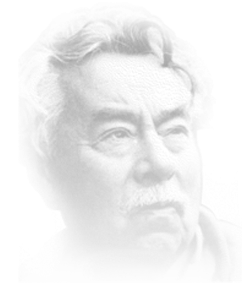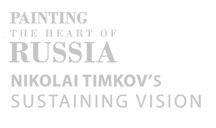 |
“For over half a century, the artist experienced Russia’s characteristic landscapes with immediacy, intensity, and profound reflection.”
Professor Alison Hilton, Chair Department of Art and Art History Georgetown University 
|
||||||
Press Release
|
| Exhibition Dates: | November 14, 2008 through March 8, 2009 |
| Gallery Hours: | Wednesday - Sunday; 2:00 – 5:00 p.m. Closed on Federal Holidays |
| Location: | Meridian International Center, White-Meyer House (Cafritz Galleries) 1624 Crescent Place, NW, Washington, DC 20009 |
Opening to the public on November 14th, Meridian International Center will present selections from The Timkov Collection, provided by Timothy and Lisa Wyman, featuring landscapes by renowned Russian painter Nikolai Efimovich Timkov (1912-1993). His paintings, many of which have never been exhibited publicly, capture an elemental relationship of a people to their land – something shared by Russians and Americans – and illustrate the distinct identity of Russia as rendered by one of its great national painters.
A holder of the title of “Honorable Artist of the Russian Federation”, Timkov is represented in major collections including the State Russian Museum and the St. Petersburg Museum of History. Dr. Albert Kostenevich, Impressionist Curator at the Hermitage Museum in St. Petersburg, has characterized him as “the greatest Russian Impressionist landscape painter” of the second and third quarters of the 20th century.
“This exhibition, involving the Embassy of the Russian Federation, provides a meaningful opportunity for Meridian to work closely with Russia at an important time of leadership change,” said Ambassador Stuart W. Holliday, President of Meridian International Center.
Nikolai Timkov was born to a farming family in the years prior to the Russian Revolution. Growing up in a village located along the lower Don River instilled in him a lifelong appreciation for rural life and nature. This influence can be seen in his remarkable depictions of small communities, winter landscapes, and the Ural Mountains – all portrayed with a deft hand in vibrant colors. He began his career by traveling to Moscow and then Leningrad for advanced work at the Academy of Art. This period of Timkov’s life coincided with the establishment of Soviet Socialist Realism, requiring all art to depict the “reality of revolutionary Russia.” Some artists turned to landscape painting as a way of avoiding overt Soviet propaganda, while still celebrating a Russian identity by including motifs such as village festivals or collective farms in their landscape paintings. Timkov distinguished himself through his concentration on the land itself.
Co-curator Dr. Alison Hilton, an eminent scholar of Russian art history and Chair of the Department of Art and Art History at Georgetown University, noted, “It would be hard to name any artist working in the mid- to late 20th century who gave such constant, fertile, and profound attention to portraying familiar surroundings. Timkov’s paintings express his deep identification with his homeland and at the same time welcome viewers’ personal responses to the landscape.”